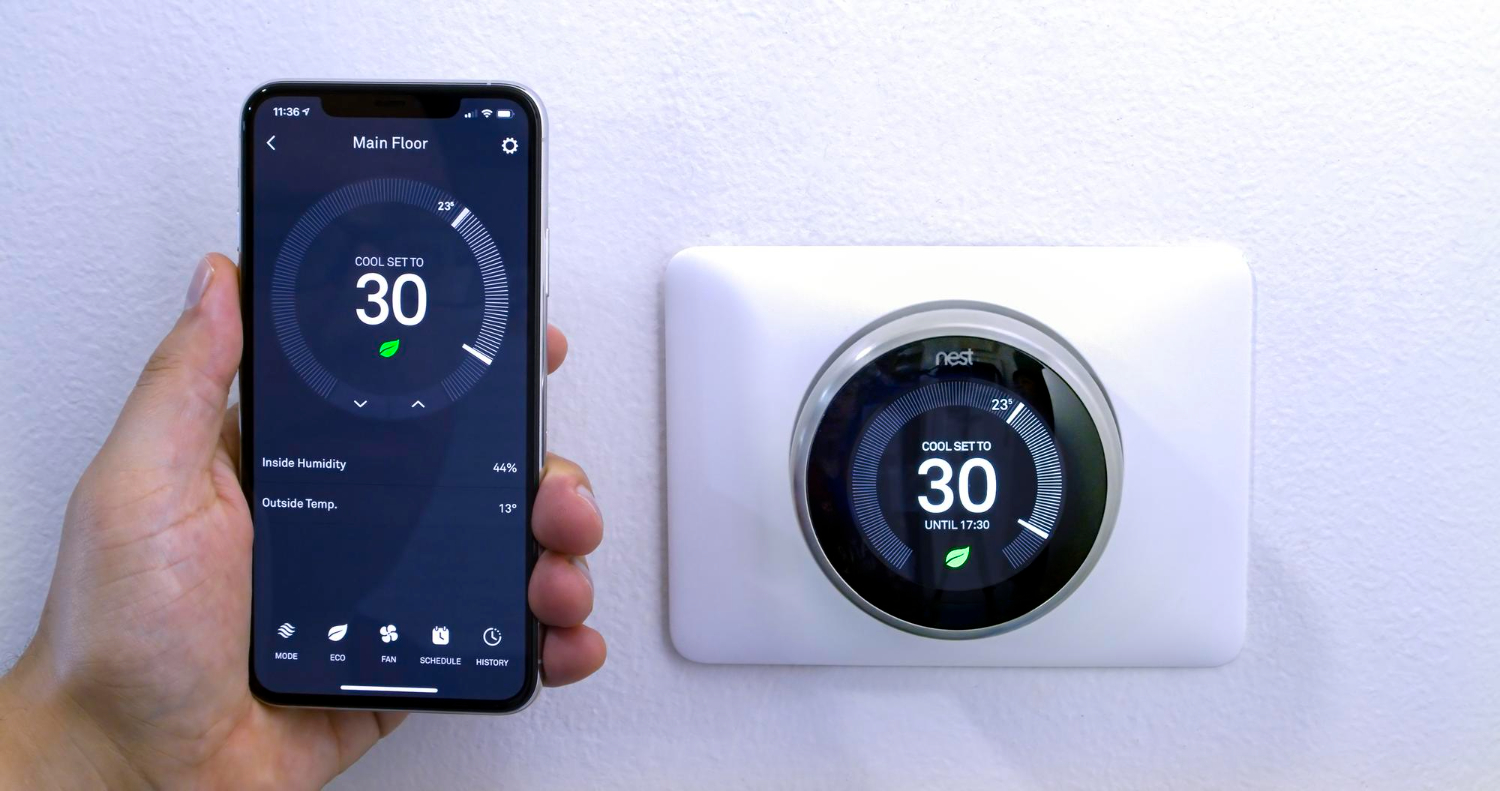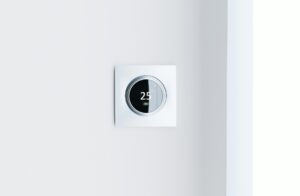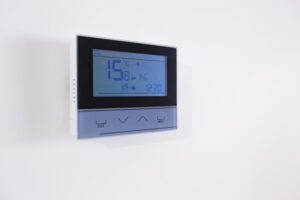
Are you thinking about installing a smart thermostat to save on energy costs? Smart thermostats have become popular in recent years, promising to make heating and cooling more efficient. But do they really help cut down on energy bills? It’s important to understand how these devices work and what benefits they offer.
Smart thermostats are designed to learn your schedule and preferences, adjusting the temperature automatically. This means your heating and cooling systems run more efficiently, potentially saving you money. They can be controlled remotely via a smartphone app, which allows you to make changes even when you’re not at home. With features like these, it’s easy to see why many people are considering the switch.
However, no technology is perfect. It’s essential to weigh the potential drawbacks and limitations of smart thermostats. Some people might find them challenging to use, and the initial cost can be a concern. Understanding both the pros and cons can help you make an informed decision.
In this article, we’ll delve into how smart thermostats work, their benefits, and the possible downsides. We’ll also share tips on how to maximize your energy savings. Whether you’re just curious or seriously considering an upgrade, this guide will give you the information you need.
How Smart Thermostats Work
Smart thermostats are more advanced than regular ones. They use sensors, Wi-Fi, and algorithms to manage your home’s heating and cooling. Here’s how they work:
1. Learning Your Schedule: Smart thermostats learn your daily routines. They know when you’re home and when you’re not. This helps them adjust the temperature automatically to save energy.
2. Remote Control: You can control a smart thermostat from your phone or tablet. This means you can change the temperature from anywhere, even if you’re not home. This is handy if you forget to adjust it before leaving.
3. Geofencing: Some smart thermostats use geofencing. This means they use your phone’s location to figure out if you’re near home. If you’re close, they can start warming or cooling your house so it’s comfortable when you arrive.
4. Weather Awareness: These thermostats can check the weather and make changes based on outside conditions. If it’s going to be very hot or cold, the thermostat adjusts to keep your energy use efficient.
5. Energy Reports: Smart thermostats often give you reports on your energy use. They show you patterns and suggest ways to save more energy. This can help you understand where you can cut down on energy costs.
Benefits of Using Smart Thermostats
Smart thermostats offer many benefits. Here are some key reasons to consider getting one:
1. Energy Savings: One of the biggest benefits is saving energy. By learning your schedule and adjusting the temperature automatically, smart thermostats can reduce wasted energy. This can lead to lower utility bills.
2. Convenience: Controlling your thermostat from a smartphone is very convenient. Whether you’re in bed or away from home, you can easily adjust the temperature. This convenience can make your life a lot easier.
3. Comfort: Smart thermostats help keep your home at a comfortable temperature all the time. They make automatic adjustments to ensure you’re never too hot or too cold. This can improve your comfort without extra effort.
4. Detailed Energy Reports: Getting detailed reports on your energy use is very helpful. It allows you to see where you are using the most energy and make changes to improve efficiency. This can lead to even more savings over time.
5. Compatibility with Other Devices: Many smart thermostats work well with other smart home devices. For example, they can connect to your smart speaker so you can change the temperature with your voice. This integration makes managing your home even easier.
Smart thermostats are a great way to improve energy efficiency and comfort in your home. With many benefits and easy-to-use features, they are a valuable addition to any home.
Potential Drawbacks and Limitations
While smart thermostats offer many benefits, there are some potential drawbacks and limitations to consider. Knowing these can help you make a well-informed decision.
1. Initial Cost: Smart thermostats can be expensive to buy and install. The upfront cost might be a barrier for some people. Though they can save you money on energy bills, it may take some time to see a return on your investment.
2. Complexity: Some people find smart thermostats complicated to set up and use. While they are designed to be user-friendly, the initial setup can be confusing. Reading the manual and following instructions carefully can help, but it’s still a challenge for some users.
3. Wi-Fi Dependency: Smart thermostats rely on a stable Wi-Fi connection to function correctly. If your internet goes down, you might lose some of the smart features. Although most smart thermostats still work manually without Wi-Fi, you won’t be able to control them remotely.
4. Compatibility Issues: Not all smart thermostats are compatible with every heating and cooling system. Before buying one, it is important to check if it will work with your current HVAC setup. Incompatibility can lead to additional costs for upgrades or adapters.
5. Privacy Concerns: Smart thermostats collect data about your home’s temperature and your schedule. Some people feel uneasy about this level of data collection. Ensure you understand the privacy policies and data security measures of the thermostat you choose.
Tips for Maximizing Energy Savings with Smart Thermostats
To get the most out of your smart thermostat and maximize energy savings, follow these tips:
1. Utilize Scheduling Features: Use the scheduling features to set specific times for your heating and cooling systems to turn on and off. Having a set schedule helps the thermostat adjust temperatures automatically, saving energy when you’re not home.
2. Enable Geofencing: Activate geofencing if your thermostat supports it. This feature tracks your location and adjusts the temperature when you’re leaving or coming home. It ensures your home is always comfortable without wasting energy.
3. Take Advantage of Energy Reports: Regularly review the energy reports provided by your smart thermostat. These reports can show you where you’re using the most energy and suggest ways to save. Making small adjustments based on this data can lead to significant savings.
4. Set Temperature Limits: Set reasonable temperature limits for heating and cooling. Avoid setting your thermostat too high in the winter or too low in the summer. Small adjustments can lead to big savings on your energy bills.
5. Keep Your HVAC System Maintained: A well-maintained HVAC system runs more efficiently. Regularly change filters, schedule annual check-ups, and keep your system clean. A smart thermostat can only do so much if your HVAC system isn’t running at its best.
6. Use Smart Home Integrations: If you have other smart home devices, integrate them with your thermostat. For example, smart blinds can help control the amount of sunlight entering your home, reducing the need for heating or cooling. This teamwork can enhance energy efficiency.
Conclusion
Smart thermostats can play a significant role in cutting energy costs and improving home comfort. They offer advanced features like learning your schedule, remote control, and detailed energy reports. While there are some potential drawbacks such as initial costs and complexity, the benefits often outweigh these issues. By following tips to maximize energy savings, you can make the most out of your smart thermostat investment.
If you’re considering a smart thermostat or need help with your HVAC system, My Jockey can assist you. Our team of experts in Saratoga Springs and The Capital Region, NY, is ready to help you achieve better energy efficiency in your home. Contact our AC maintenance company at My Jockey today and start saving on your energy bills!


